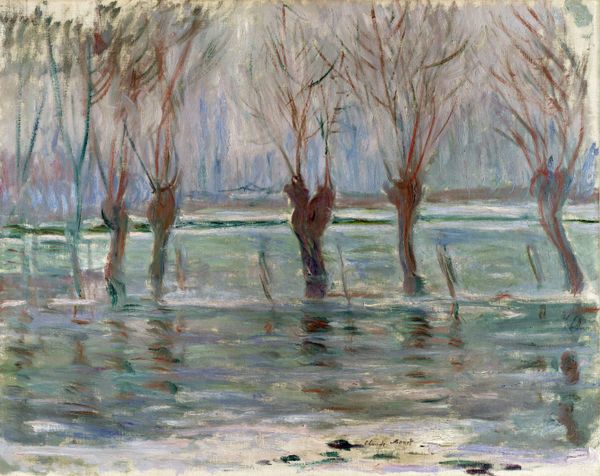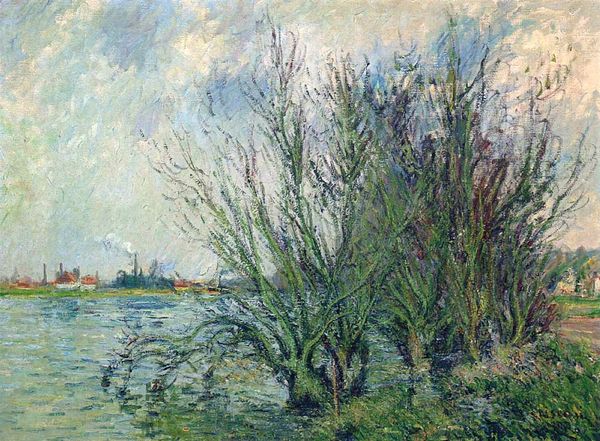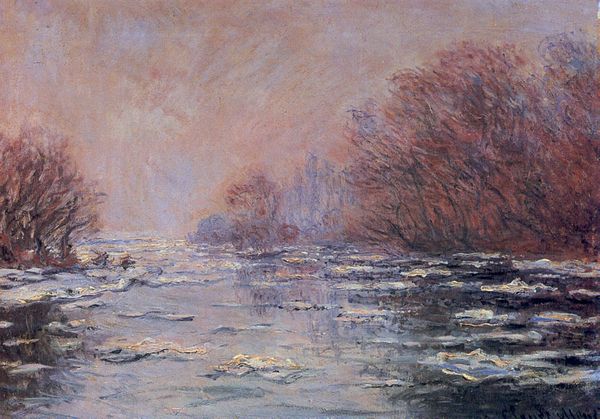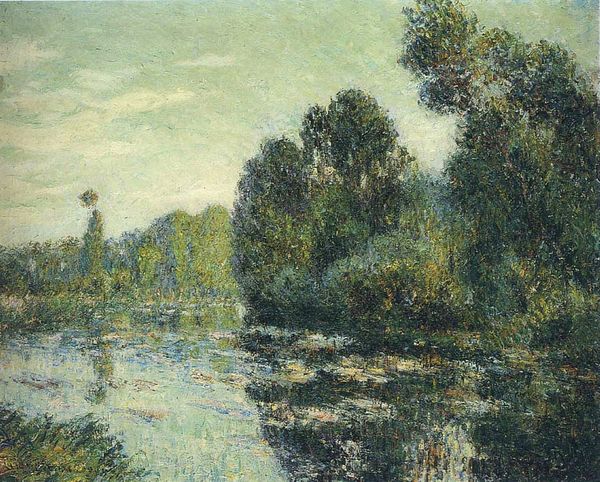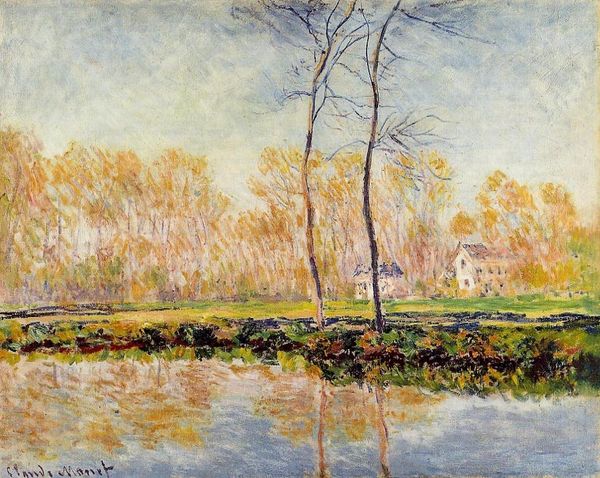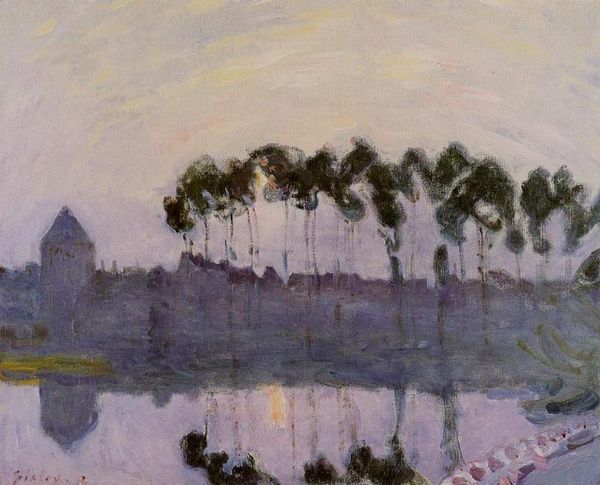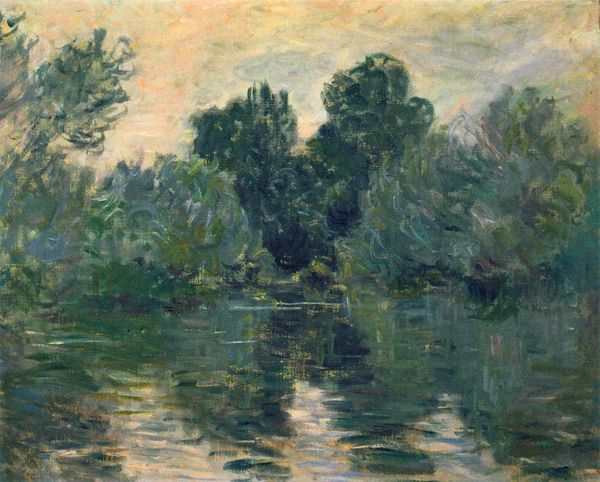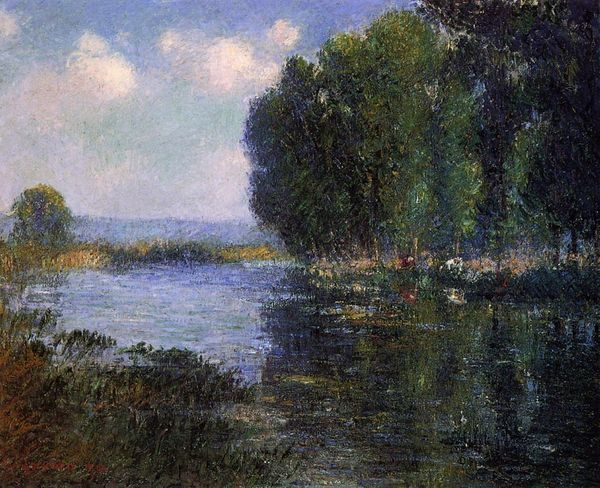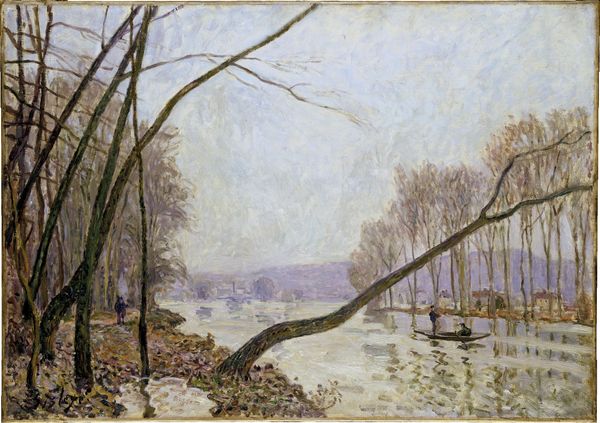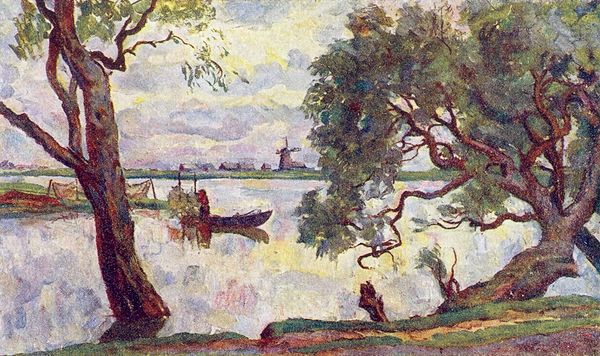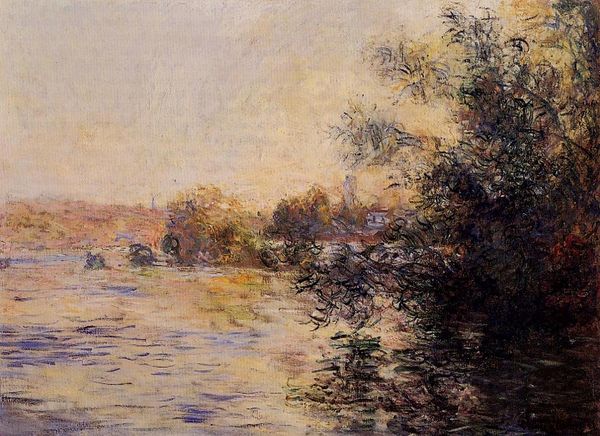
Dimensions: 153.16 x 203.2 cm
Copyright: Public domain
Curator: This is Gustave Loiseau’s, "The Pointe de L Ile Under Water" from 1910. Look at the pale winter light rendered in oil. There’s a melancholic, almost eerie beauty to it. Editor: Eerie is right. The gray-purple palette feels unsettling, like the whole scene is submerged in a dream, or maybe…a coming climate disaster. Curator: Indeed, there is a fragility to it, but I see it more as capturing a specific environmental moment. Loiseau was a post-impressionist, painting en plein air. It shows his observation of transient effects on the landscape. The flooding river creates this interesting inversion. Notice how the reflection of the trees becomes almost as substantial as the trees themselves. Editor: Substantial, but also ethereal. It's all about the materiality, the layering of paint creating a kind of hazy veil. The rapid brushstrokes make you feel the movement of the water, but also emphasize how the artist must have fought to capture this rapidly changing scene. Curator: Absolutely, and remember that this period also reflects wider anxieties of modernity, and urban encroachment on the natural landscape. The high water itself speaks of the unpredictable power of nature versus man. Editor: I think you are spot on about nature and modernity – It's less about Loiseau wrestling with "high art" than about understanding painting as hard physical labor, subject to environmental forces. And look at those visible brushstrokes again: an unpretentious mark of the hand at work. Curator: An important counterpoint! Consider too, how Loiseau’s landscape fits within broader movements: Post-Impressionism was questioning academic traditions and broadening subject matter for painting in France. Editor: It forces us to ask; whose landscape are we seeing, and for whom was it made? What class relations are reflected? Curator: A rich point to consider! It highlights how landscape painting, though seemingly serene, could express complex issues during its time. Editor: Agreed. I came away understanding both Loiseau’s methods and a subtle tension in his chosen subject.
Comments
No comments
Be the first to comment and join the conversation on the ultimate creative platform.
